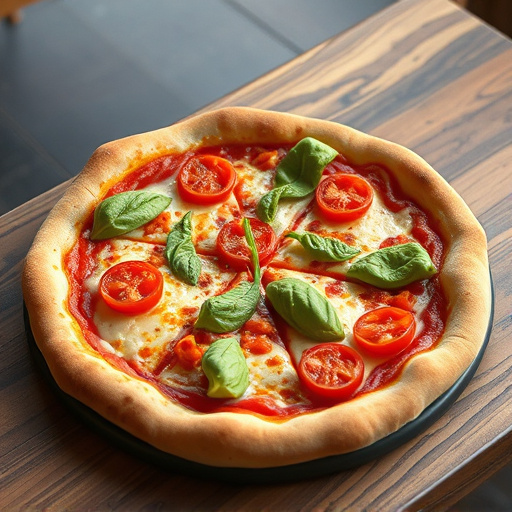Pepe Pizza, a vibrant food trend named after its creator, has stormed New York City's culinary scene with its unique blend of Italian tradition and local flavors. Starting as an internet meme featuring "Pepe the Frog," this cultural icon now enjoys global popularity, especially among younger generations. Its unconventional toppings and bold presentation, from classic pepperoni to exotic combinations like pineapple, encourage creativity and self-expression. The trend's viral success underscores the significant influence of internet subcultures on food preferences, as people worldwide embrace their culinary creativity through Pepe Pizza creations, sparking global conversations around food.
“Pepe Pizza, more than just a topping combination, has sparked a culinary revolution. This unique fusion of flavors has captivated palates worldwide, leading to a thriving subculture dedicated to its art. From its humble beginnings to its current global fame, Pepe Pizza has left an indelible mark on food trends.
In this article, we embark on a journey to uncover the origins and cultural impact of Pepe Pizza, dispel misconceptions, and explore why it’s more than just a buzzword—it’s a culinary enigma that deserves our attention.”
- What is Pepe Pizza?
- The Rise of Pepe Pizza Culture
- Exploring the Impact and Misconceptions of Pepe Pizza
What is Pepe Pizza?

Pepe Pizza is a unique and controversial food phenomenon that has sparked both fascination and debate among food enthusiasts. It’s more than just a pizza; it’s a cultural icon with a rich, albeit often debated, history. This specific style of pizza originated in New York City’s diverse culinary landscape, blending Italian traditions with local flavors and a dash of humor. The name itself, Pepe Pizza, is an affectionate nod to its creator, who added a playful twist to traditional pie recipes.
The essence of Pepe Pizza lies in its unconventional toppings and bold presentation. It often features an array of colorful and sometimes unusual ingredients, from pepperoni and sausage to more exotic additions like pineapple or even unique combinations suggested by customers. This pizza style encourages creativity and self-expression, making it a beloved choice for those seeking to embrace the unexpected in their culinary adventures.
The Rise of Pepe Pizza Culture

The popularity of Pepe Pizza has transcended from a simple dish to become a cultural phenomenon, especially among younger generations. This unique pizza style, characterized by its vibrant colors and humorous imagery, has found its place in online communities and social media platforms, fostering a dedicated fan base. The trend started as a playful meme, featuring the iconic “Pepe the Frog” character, and quickly evolved into a culinary movement. Food enthusiasts and social media influencers alike began experimenting with creative pizza designs, incorporating Pepe-inspired elements such as vibrant green pepperoni, yellow cheese, and colorful toppings that mimic the meme’s aesthetic.
This surge in popularity has led to the emergence of dedicated “Pepe Pizza” events, pop-up restaurants, and online challenges, further solidifying its place in modern food culture. The rise of this trend showcases the powerful impact of internet subcultures on culinary preferences, where a simple meme can spark a global conversation around food, encouraging people to embrace their creativity in the kitchen and share their unique pizza creations.
Exploring the Impact and Misconceptions of Pepe Pizza

Pepe Pizza has become a cultural phenomenon, sparking intense debate and countless memes. Beyond the humor, it’s important to explore the impact this fictional food has had on online communities. Often misunderstood as mere internet satire, Pepe Pizza represents a complex interplay of social dynamics and culinary metaphor. Its viral nature highlights the power of visual humor and shared references in fostering community engagement.
However, misconceptions abound; Pepe Pizza isn’t just a joke, but a symbol that has taken on a life of its own. It reflects trends in internet culture, meme evolution, and the way food is used as a metaphor for social commentary. Understanding these nuances reveals the depth behind a seemingly simple viral sensation, offering insights into how online spaces create, spread, and sometimes misinterpret cultural phenomena like Pepe Pizza.
Pepe pizza, a seemingly simple dish, has evolved into a cultural phenomenon, captivating folks worldwide. From its humble beginnings to the vibrant online communities it’s sparked, Pepe pizza represents more than just a meal—it’s a shared experience that brings people together. Understanding its rise and dispelling misconceptions is key to appreciating the unique role this culinary creation plays in modern culture. In the world of food trends, Pepe pizza stands as a true game changer, leaving an indelible mark on our collective palates.
